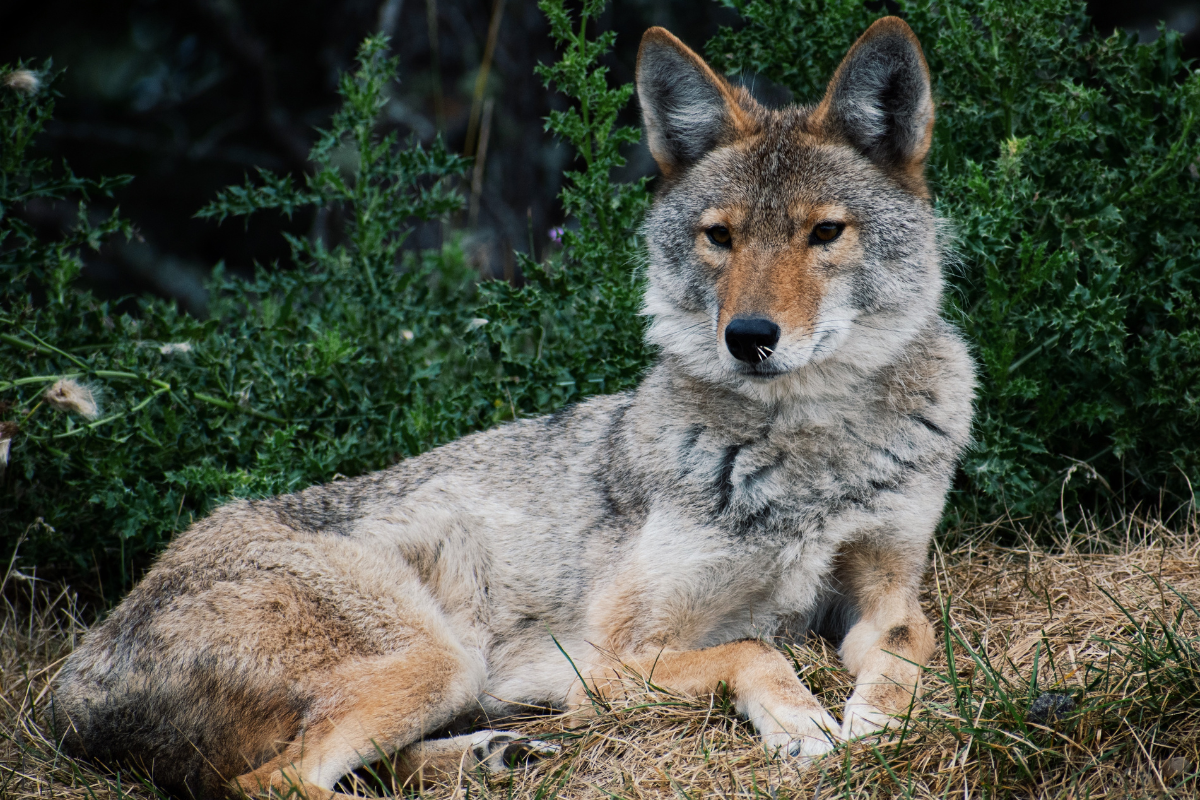Since wildlife and critical habitat protection are at the core of our mission, these recent headlines about defusing cyanide bombs, banning rodenticides and boosting backyard biodiversity are giving us hope.
Cyanide bombs banned on BLM public lands
The U.S. Department of the Interior has banned the use of M-44s, a.k.a. cyanide bombs, on public lands administered by the Bureau of Land Management, accounting for about one-tenth of the American landscape and 245 million acres in all. As Friends of Animals reported in its Winter 2021 Action Line cover story, M-44s are spring-activated devices that indiscriminately deliver a deadly dose of sodium cyanide to any animal who sniffs one out—whether the victim is a protected wolf, coyote, fox or family pet out on a hike.
Deployed at the meat industry’s request to kill wildlife it deems as threats to doomed cattle and sheep, the sickening poison bombs have killed countless wild animals, thousands of dogs and injured scores of humans.
As our allies at Predator Defense note, this win provides momentum for a push to ultimately ban cyanide bombs everywhere, including U.S. Forest Service lands, as well as putting an end to M-44 use by USDA Wildlife Services agents on private lands at the behest of ranchers.
California broadens its moratorium on deadly rodenticides
Wildlife advocates are hailing the passage of a California bill that expands on a moratorium on second-generation anti-coagulant rodenticides in the state that passed in 2020. The new bill bans the use of Diphacinone, a first-generation anticoagulant poison also used to kill rats, squirrels and other rodents. SGARS were developed after 1970.
All anticoagulant rodenticides work by disrupting the normal blood clotting process so that dosed mice or rats suffer from uncontrolled bleeding or hemorrhaging. Not only are anticoagulant poisons deadly to the targeted animals but also to many other innocent victims, including hawks, falcons, eagles, owls, vultures, coyotes, foxes, bobcats, raccoons and more. These non-targeted victims succumb to secondary poisoning after consuming poisoned rodents.
A 2020 study conducted by Tufts Wildlife Clinic in Massachusetts found that 100 percent of the 43 red tailed hawks tested showed positive results for both first- and second-generation anticoagulant poisons, with SGARs being the most prevalent.
“We are facing a second ‘Silent Spring’ because of these rodenticides,” said Priscilla Feral, president of Friends of Animals, which is championing a ban on the use of second-generation anticoagulant rodenticides in Connecticut.
A Pennsylvania plan to help turn lawns into meadows
FoA has long believed that environmental activism must begin at home. That’s why we’re cheering the Pennsylvania Department of Conservation and Natural Resources for its plan to offer funds for residents and businesses who want to convert their lawns to meadows.
The initiative was introduced in 2020, but interest from residents, businesses and nonprofits has increased this year, reports the WHYY News Climate Desk, a public media organization serving the Philadelphia region. Lawn owners can contact the department for lawn conversion resources or seek funding to pay for the landscape work.
There are two million acres of lawn in Pennsylvania. Converting even a fraction of that biologically barren grass turf to wildflower meadows will benefit native pollinators, boost biodiversity and prevent stormwater runoff pollution. And because wildflower meadows don’t have to be mowed as frequently or doused with fertilizers and pesticides, doing good for wildlife and nature will likely save homeowners money.
As far as what native plants to choose for your wildflower pollinator garden, it depends on what area of the country you live. Visit the Xerces Pollinator Conservation Resource Center at xerces.org/pollinator-resource-center for region-specific collections of publications, native seed vendors and other resources to aid in establishing pollinator habitat.

